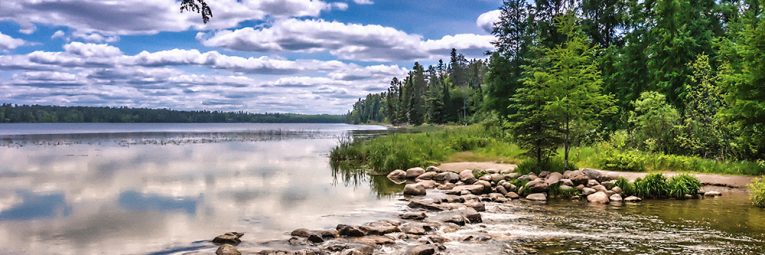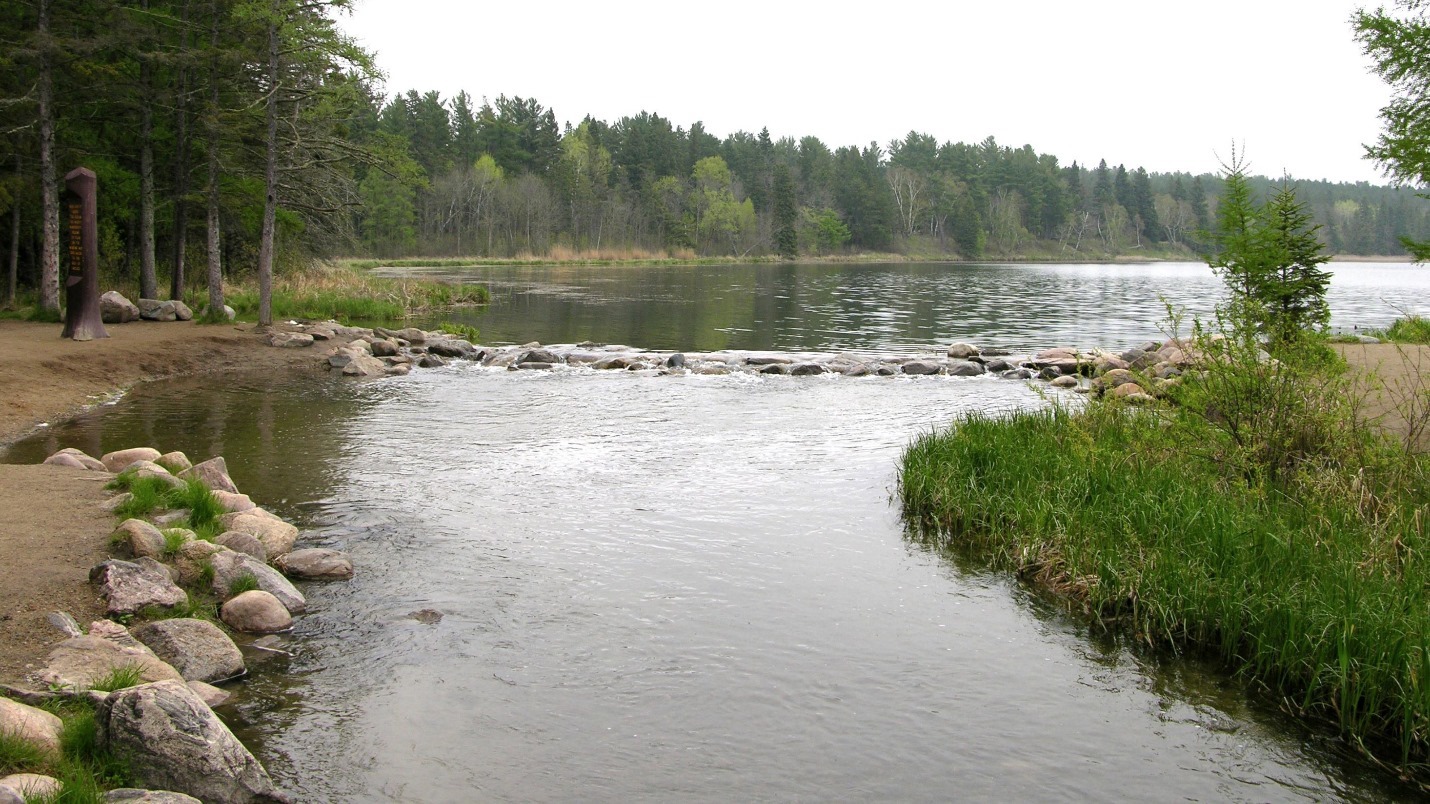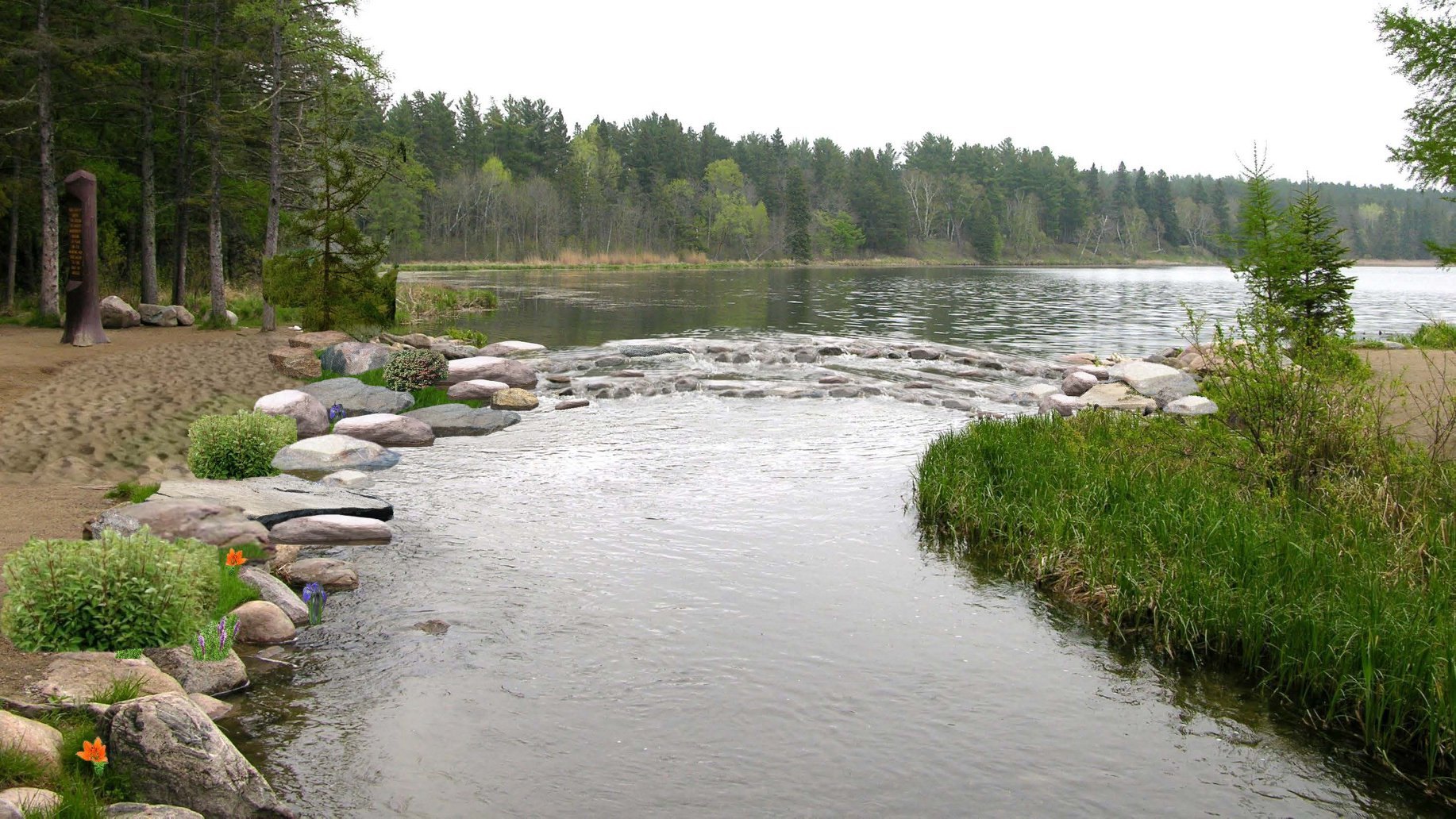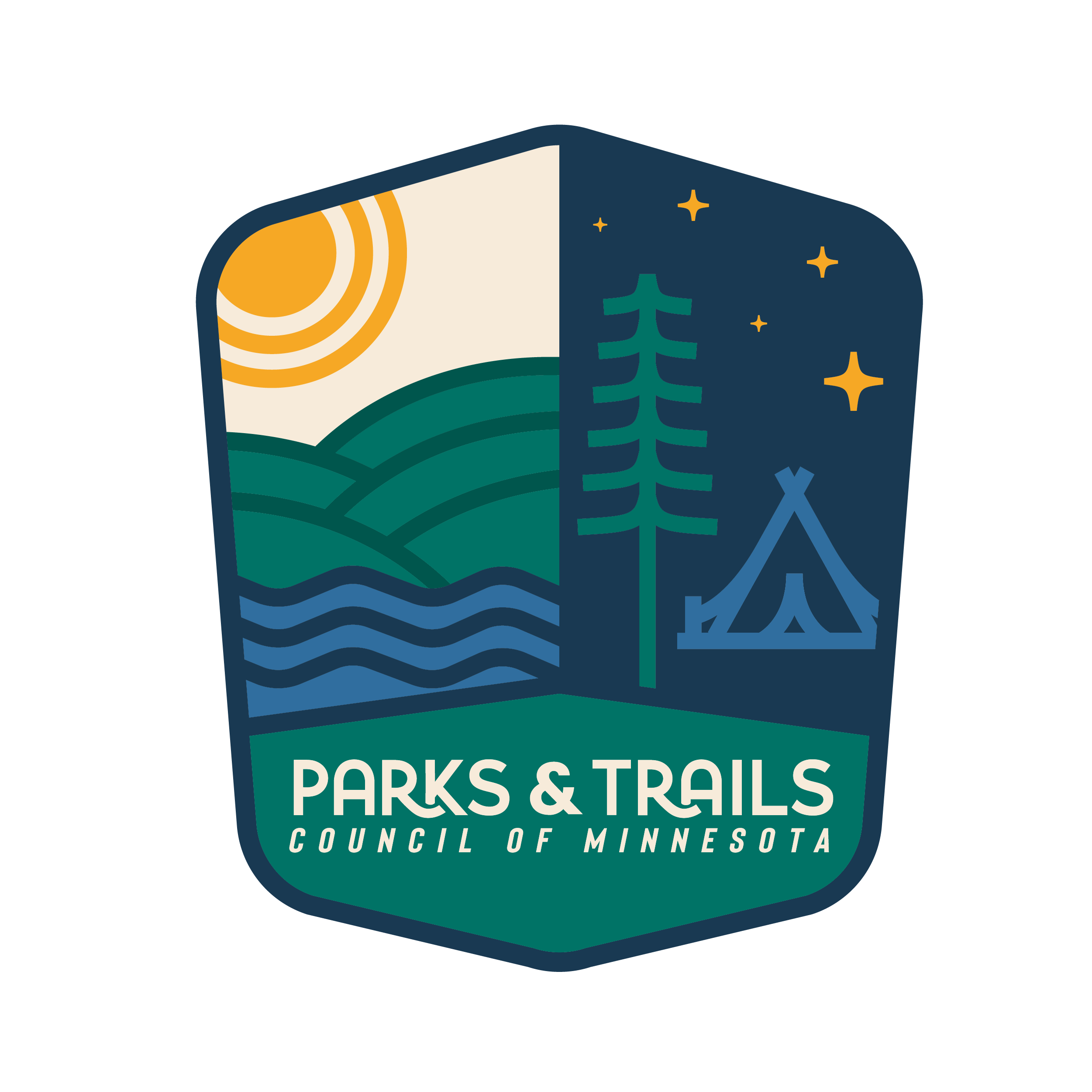
Shoreline restoration project planned for Mississippi Headwaters in Itasca State Park
The Department of Natural Resources is planning a shoreline restoration project to address erosion at the headwaters of the Mississippi River within Itasca State Park in northwestern Minnesota. The work will restore the original river channel width and stabilize the streambank at the headwaters site.
The project is designed to minimize closure time to accommodate park visitors. Work will begin early October after the peak tourism season. Access to the site will be restricted for a five-day period.

Headwaters at Itasca State Park today 
Rendering of the planned restoration of the headwaters.
“Nearly a half-million people visit the headwaters of the Mississippi River every year,” said Aaron Wunrow, Itasca State Park manager. “Erosion at the site has occurred gradually over a long period of time due to heavy visitation rates.”
Heavy foot traffic has carried soil and other material from the shoreline into the river. Additionally, the dam below the surface has become ineffective, resulting in water flow that is undercutting the shoreline and widening the mouth of the river.
The restoration project will use boulders atop the original dam to create a properly shaped channel that will produce a natural flow to the water. This will help reduce bank erosion by directing water away from the shoreline to prevent scouring of the streambanks. The shoreline will be stabilized with a combination of boulders and natural vegetation that will grow and root quickly to provide erosion protection.
“The river downstream of the headwaters is still intact and shows no visible impacts from the erosion,” said Wunrow. “This project will use a natural design approach to ensure it remains protected into the future, maintaining the existing high water quality and healthy stream system.”
The appearance of the headwaters will not change dramatically from present. Visitors will notice a narrowing of the channel, the addition of boulders on the shoreline, including flat boulders that will provide safe access to the river, and added vegetation on the streambank.
The DNR divisions of Parks and Trails, Ecological and Water Resources and Fish and Wildlife are partnering to combine expertise and resources to undertake the work. The project cost is approximately $35,000, with a portion of funding from the Parks and Trails Fund. The fund was created after voters approved the Clean Water, Land and Legacy Amendment in November 2008.
About Lisa Filter
News Categories
Recent News
-
We have a new CRM December 11, 2024
-
Vote yes on Lottery proceeds October 29, 2024
-
Two Friends Groups receive ... August 28, 2024
-
Share your opinion on fundi... August 27, 2024
-
DNR Update: Next Steps in t... August 26, 2024
